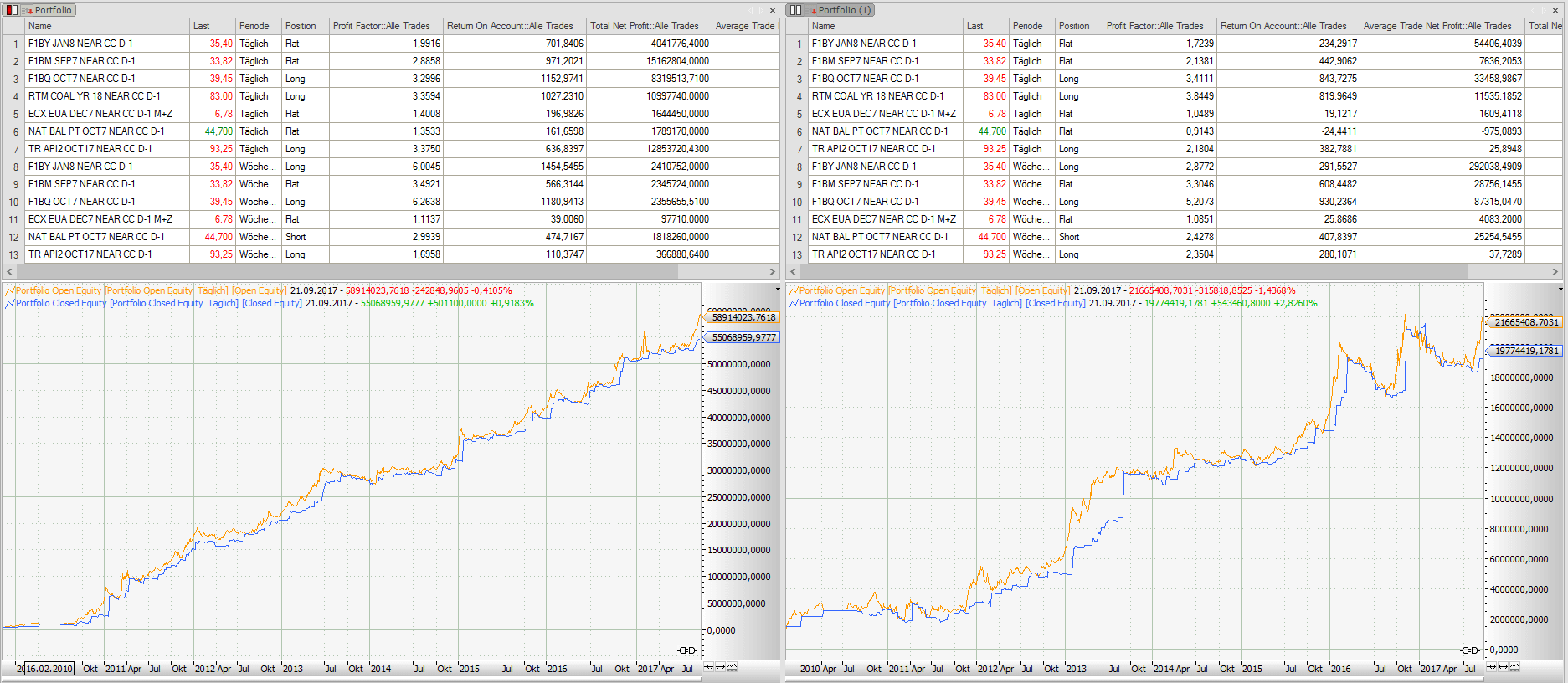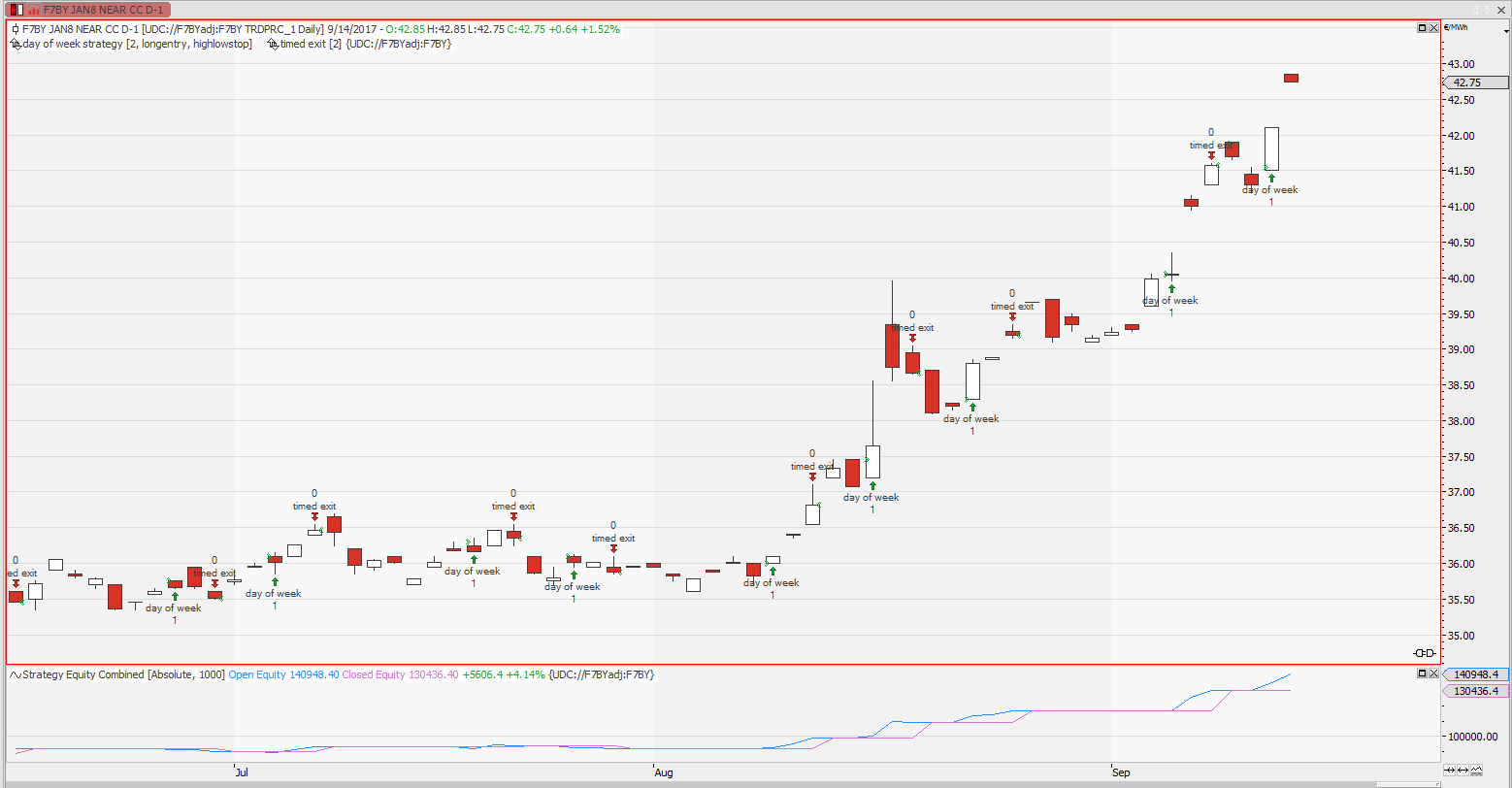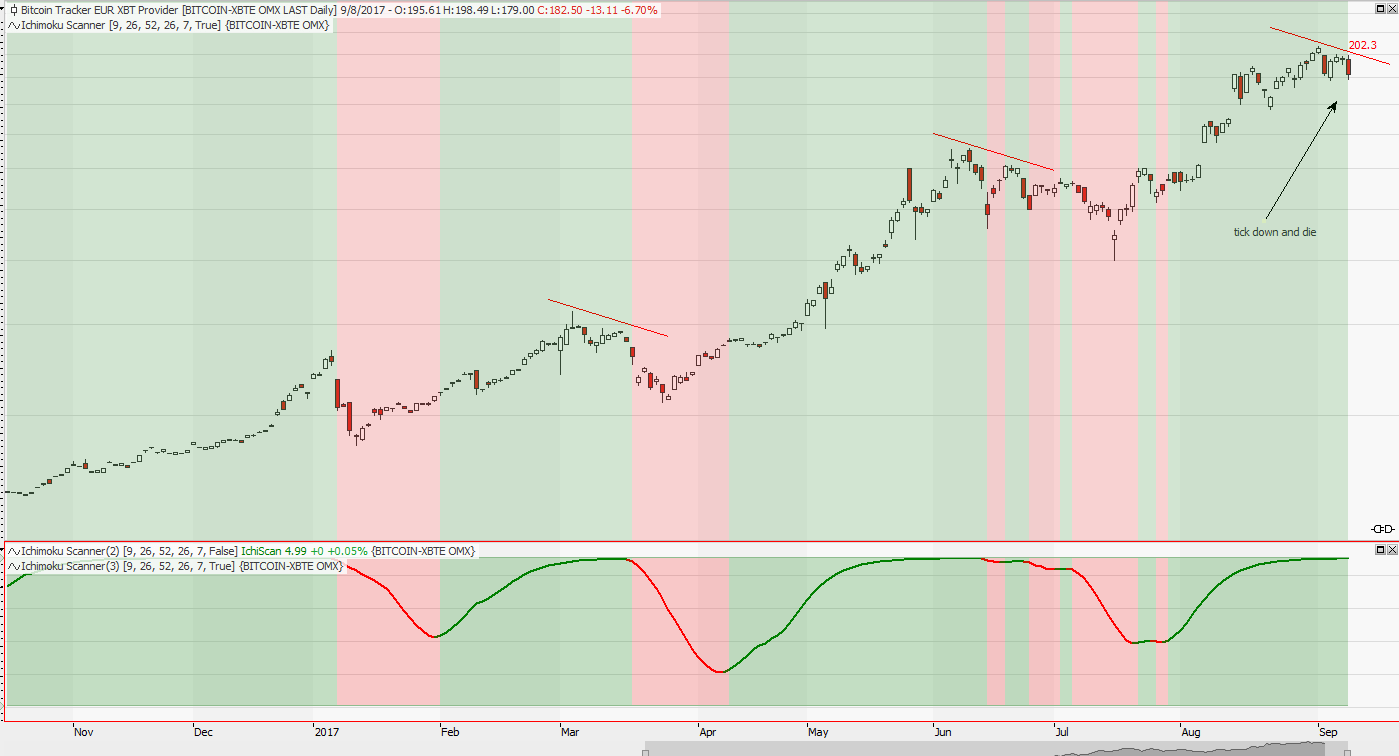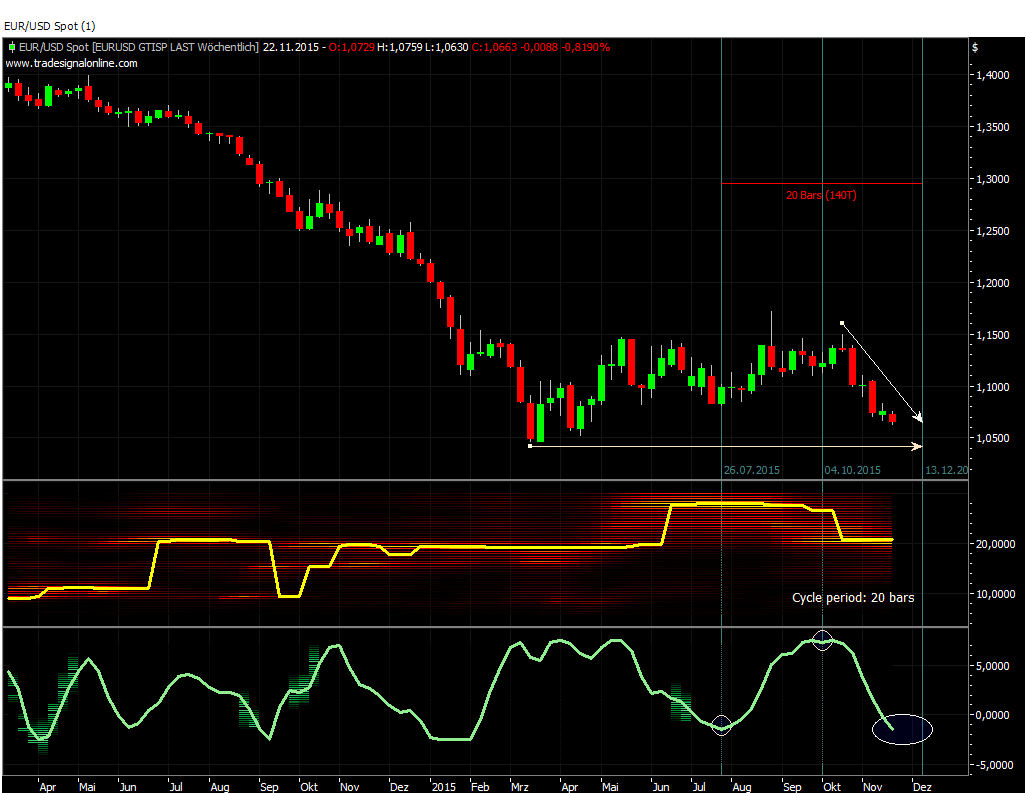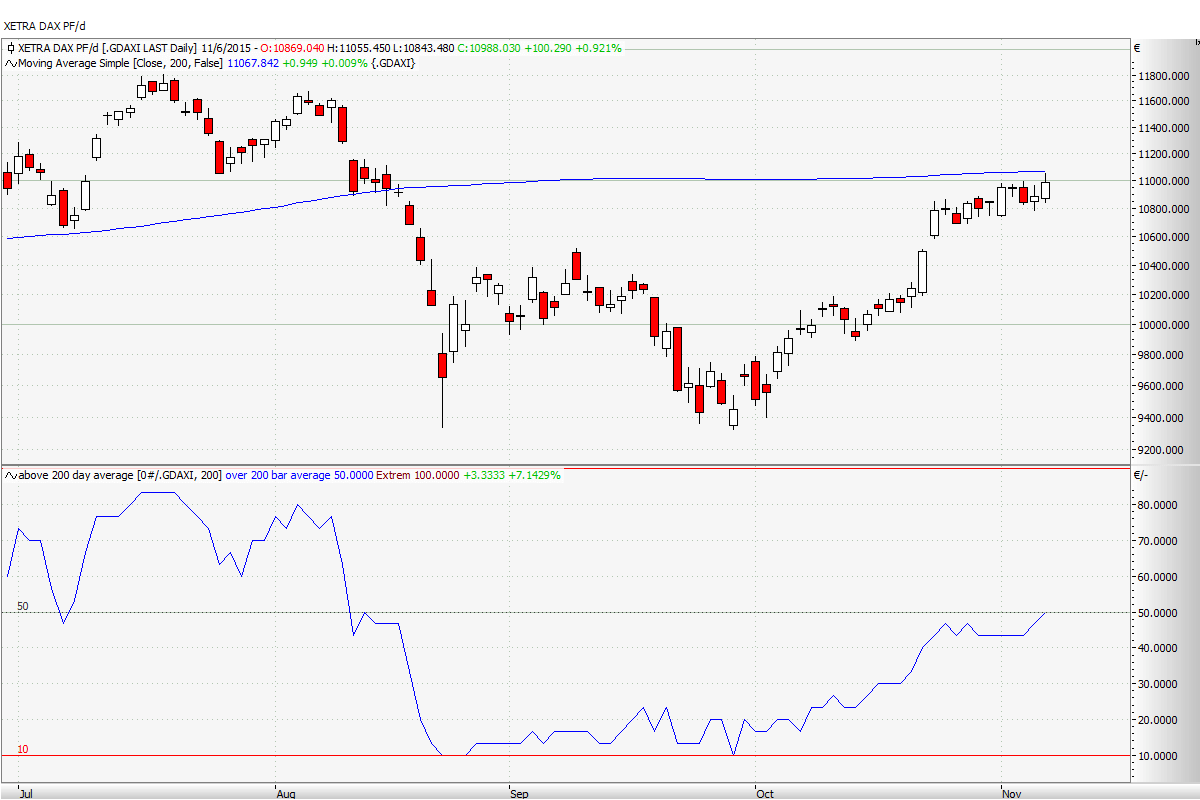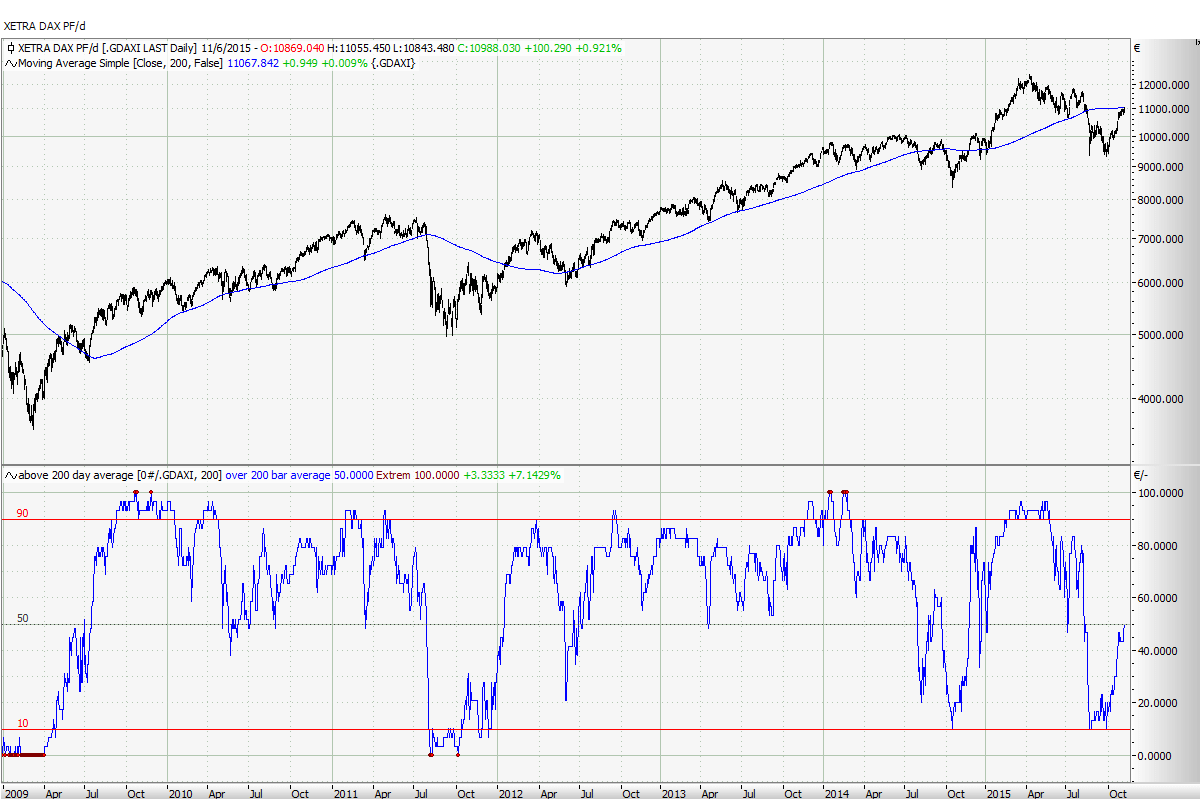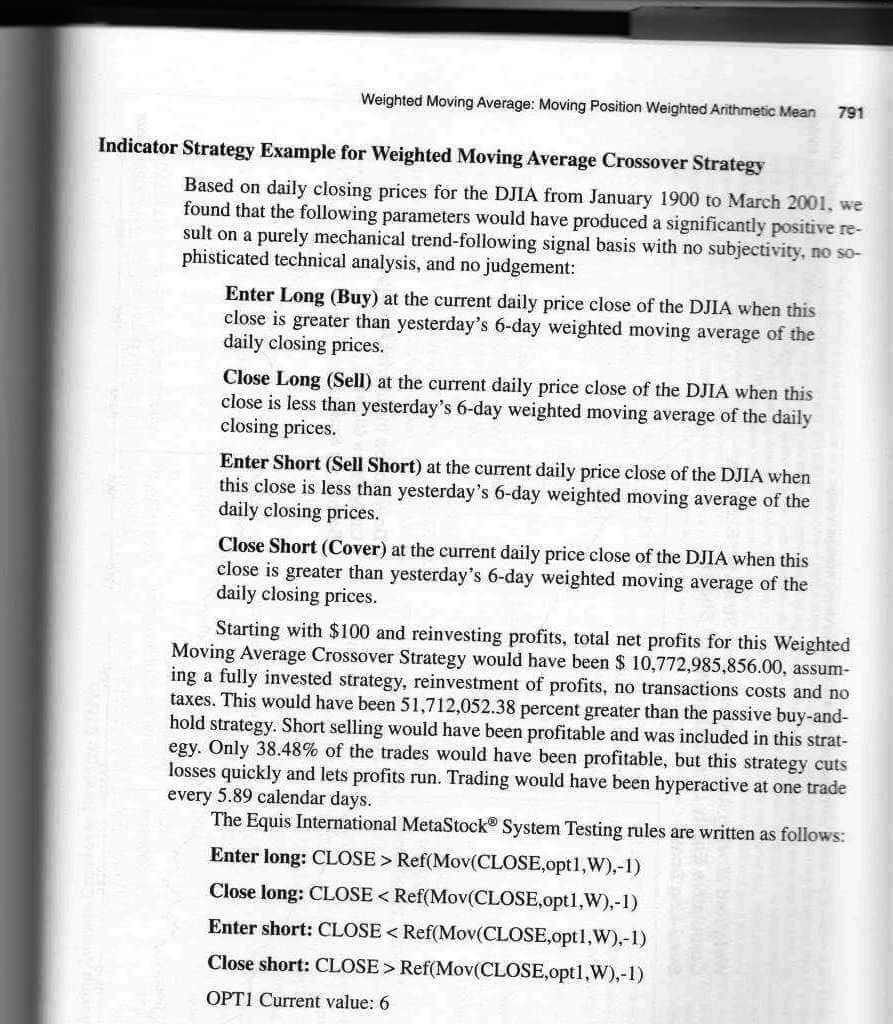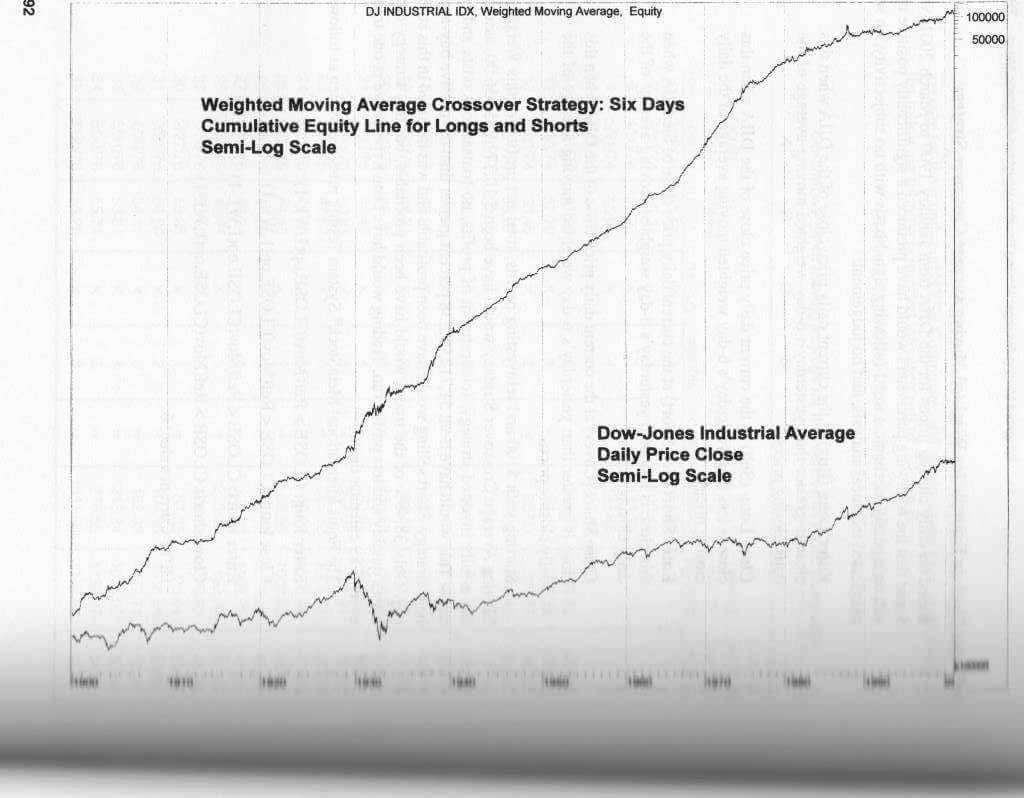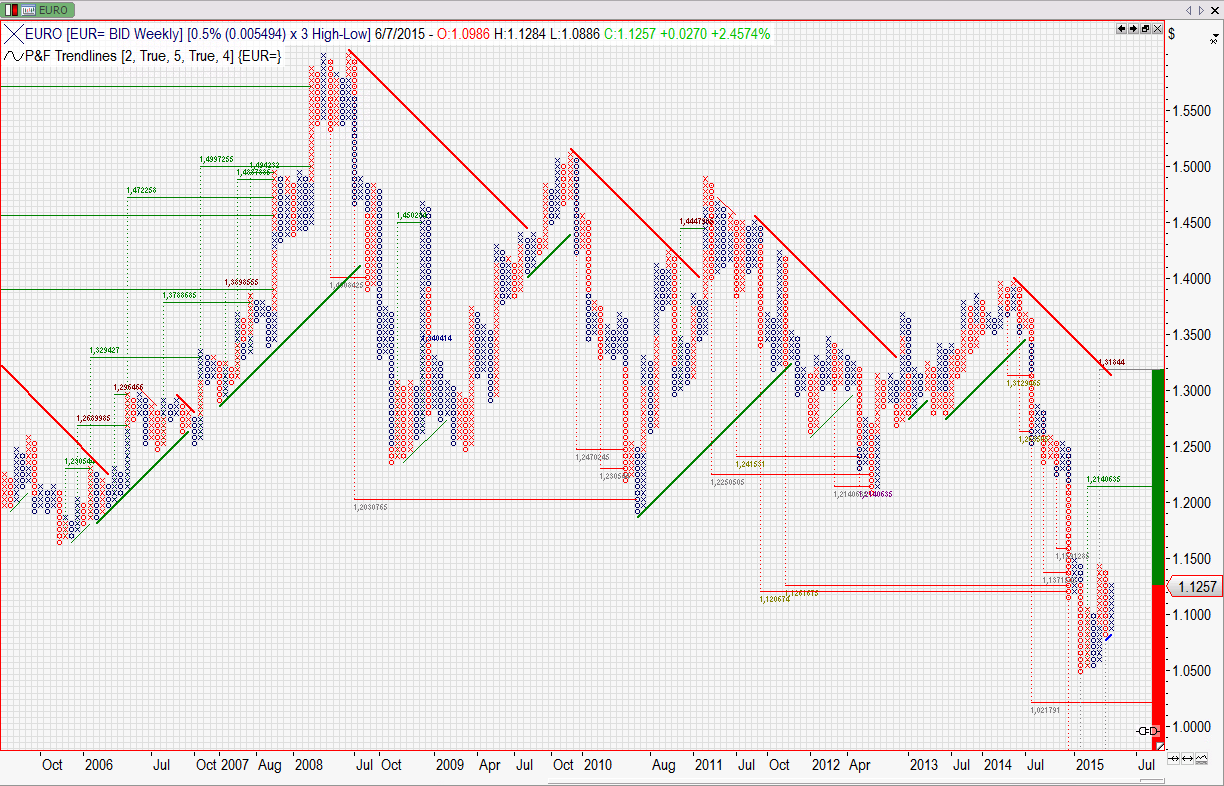Working on your position sizing algorithm is an easy way to pimp an existing trading strategy. Today we have a look at an energy trading strategy and how the position sizing can influence the performance of the strategy.
The screenshot shows you the returns of the same trading strategy, trading the same markets, the same time frames and using the same parameters. The returns on the left side look nice, making money every year. The returns on the right side are somehow shaky, and you would have to love volatility of returns if you would think about trading this basket. The only difference between the basket on the right and on the left side is the position sizing.
The energy basket:
The basket trades German power, base and peak (yearly, quarterly, monthly), coal, gas, emissions. All instruments are traded on a daily and weekly time frame chart, using the same parameters. If the daily trading uses a 10-period parameter, the weekly trading would use a 10-week parameter. This limits the degrees of freedom I have when doing the strategy-time frame-parameter merge, thus minimizing the curve fitting trap.

